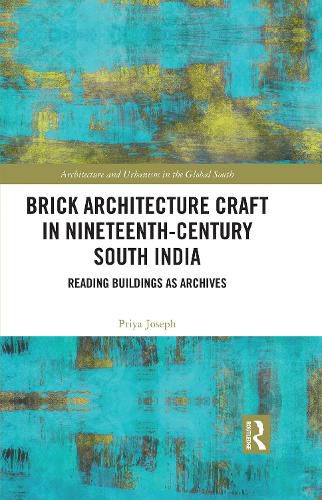Readings Newsletter
Become a Readings Member to make your shopping experience even easier.
Sign in or sign up for free!
You’re not far away from qualifying for FREE standard shipping within Australia
You’ve qualified for FREE standard shipping within Australia
The cart is loading…






This book explores brick architecture of the nineteenth century in South India, through the lens of tectonics and materiality. The book is a diachronically elaborated history of brick architecture, especially analysing the hybridity due to the indigenous and colonial intersections of nineteenth-century India. It offers a decolonial reading of architecture through meticulous measured drawings as a tool and presents an argument for reading buildings as archives.
South India has thousands of dilapidated buildings, which may be erased due to neglect, laxed laws and ignorance. The book exposes the tectonics, fixing, material choices, socio-political circumstances of this architecture in brick. This method of analysing the dilapidated buildings as an archive of construction, forefronts the 'makers' and the agency of the local craftspeople rather than an Anglo-centric gaze. Brick buildings such as the extravagantly ornamental and structurally rich Chatrams of Thanjavur, Rosary Church, Hassan and Fort School, Bengaluru, are some of the many cases elaborated in the book. The book connects the history of brick to its many contemporary challenges and manifestations.
The book is intended for students and scholars of architecture, history, material-culture, colonial studies and the Global South as well as anyone interested in brick as material for architecture.
$9.00 standard shipping within Australia
FREE standard shipping within Australia for orders over $100.00
Express & International shipping calculated at checkout
This book explores brick architecture of the nineteenth century in South India, through the lens of tectonics and materiality. The book is a diachronically elaborated history of brick architecture, especially analysing the hybridity due to the indigenous and colonial intersections of nineteenth-century India. It offers a decolonial reading of architecture through meticulous measured drawings as a tool and presents an argument for reading buildings as archives.
South India has thousands of dilapidated buildings, which may be erased due to neglect, laxed laws and ignorance. The book exposes the tectonics, fixing, material choices, socio-political circumstances of this architecture in brick. This method of analysing the dilapidated buildings as an archive of construction, forefronts the 'makers' and the agency of the local craftspeople rather than an Anglo-centric gaze. Brick buildings such as the extravagantly ornamental and structurally rich Chatrams of Thanjavur, Rosary Church, Hassan and Fort School, Bengaluru, are some of the many cases elaborated in the book. The book connects the history of brick to its many contemporary challenges and manifestations.
The book is intended for students and scholars of architecture, history, material-culture, colonial studies and the Global South as well as anyone interested in brick as material for architecture.